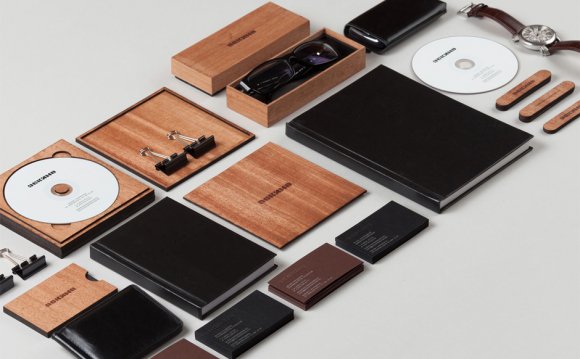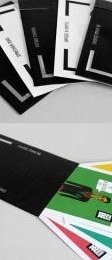
 The focus of your portfolio should always be your work and the results you create, not necessarily you as a person—but you still need to have some sort of presence throughout your portfolio’s layout. The best strategy is to present yourself as a brand. This doesn’t mean you need to develop a new “brand name”—your own name can do just fine.
The focus of your portfolio should always be your work and the results you create, not necessarily you as a person—but you still need to have some sort of presence throughout your portfolio’s layout. The best strategy is to present yourself as a brand. This doesn’t mean you need to develop a new “brand name”—your own name can do just fine.
 In this creative example, we see the artist has turned her name into a logo, which allows it to be repeated throughout the portfolio to help build brand awareness. A symbol can represent much more to a potential client than just your name and contact information. It presents both you and your work as a grand concept.
In this creative example, we see the artist has turned her name into a logo, which allows it to be repeated throughout the portfolio to help build brand awareness. A symbol can represent much more to a potential client than just your name and contact information. It presents both you and your work as a grand concept.
Branding yourself also demonstrates to a client that you are capable of building and maintaining a brand identity, which means you can do the same for them.
2. Don’t be afraid to show off
 Printed graphic design portfolios are all about making an impression, but you’re not going to do that by holding back. Don’t be afraid to trust your gut, because if you create something that excites you, it’s ultimately going to excite your clients.
Printed graphic design portfolios are all about making an impression, but you’re not going to do that by holding back. Don’t be afraid to trust your gut, because if you create something that excites you, it’s ultimately going to excite your clients.
In this example, the artist transformed his portfolio into a magazine, something that people often browse, read and even keep on their coffee table. By presenting his work in this format, the graphic designer is communicating a positive message to the audience about his work. A magazine usually features professional quality design and photography, so by presenting his portfolio as a magazine, he’s telling the audience that his work is of a comparable quality. And what client could argue with that claim when they have the proof right in front of them?
 3. Be surprising
3. Be surprising
Everybody always talks about the importance of first impressions, but nobody ever mentions how important second impressions can be. Nothing beats that moment when you completely dazzle and delight your audience by surprising them with a brand new element. Pretend your portfolio is telling the audience a story about the work you do—hook them in with an unexpected twist.
This print portfolio may look unassuming from the outside, but when the audience opens it up, a 3-D robot pops out at them. It’s this kind of spontaneity that potential clients really remember.
Best of all, the surprise comes from an interactive element, which means the audience will develop a stronger connection to it since they had a hand in bringing it to life.
RELATED VIDEO
















